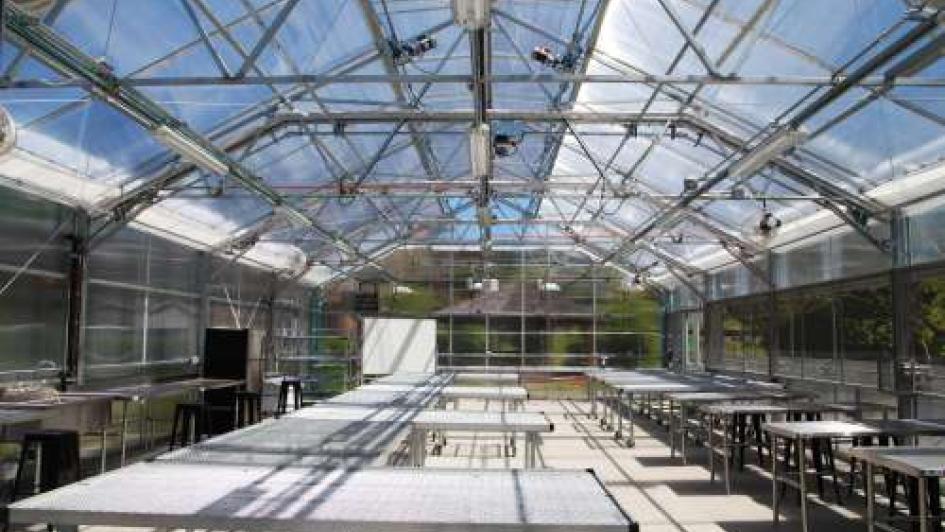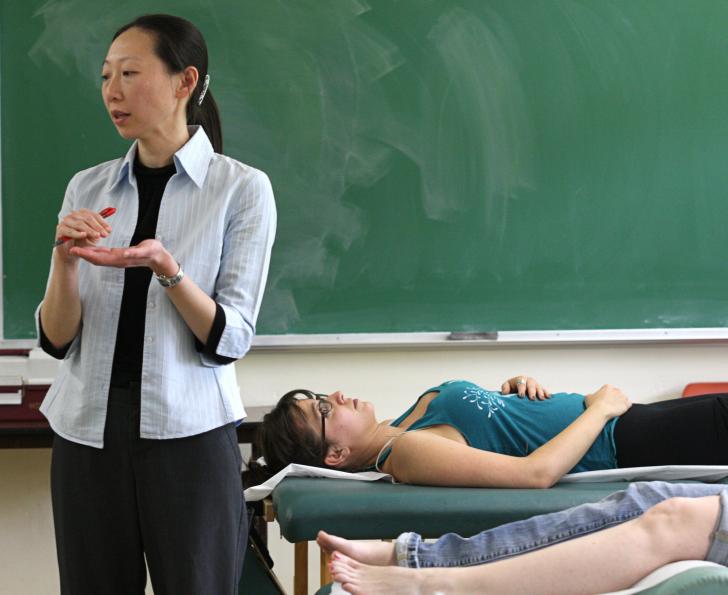Bastyr's Teaching Greenhouse Opening

Published
On Tuesday, June 13, Bastyr University celebrated the dedication of its new Teaching Greenhouse on its Kenmore campus. This Greenhouse is a “living classroom,” providing education and resources for both Bastyr’s students and the public in general.
The Greenhouse has been largely made possible by donations from the Seattle Rotary Service Foundation and the estate of Agnes L. Cash, the grandmother of Sheila Kingsbury, ND, RH, chair of Bastyr’s botanical medicine department.
“My family was in the florist business back three generations,” shared Kingsbury. “My great-grandmother, my grandmother, my mother, and I all worked in the family business in Illinois, and the greenhouse here in Washington is a culmination of a dream that I have had for years.”
The Greenhouse is also the culmination of the Sacred Seeds Project, which Bastyr launched in 2011. The University’s project is part of a worldwide Sacred Seeds Sanctuary Project designed to preserve diverse ecosystems and indigenous plant knowledge. The Sacred Seeds project was previously managed by the Missouri Botanical Garden, one of the largest botanical research institutes in the world and a donor to Bastyr’s Teaching Greenhouse. The Sacred Seeds Project has now joined forces with the United Plant Saver’s organization to further develop these sanctuaries around the world.
Also among the donors to the Greenhouse are the Snoqualmie Tribe and the Tulalip Tribes Charitable Fund.
“The Teaching Greenhouse and the Sacred Seeds Ethnobotanical trail provide us with a space to work with various organizations – from local schools to community groups – to provide information about indigenous plants and to teach cultivation of local herbs or offer up the space for tribal communities to share this knowledge with their community members,” said Kingsbury.
Additional donors to the Greenhouse are Dean Witter Foundation; Denese M. Bevard; FoodState, Inc.; Herb Pharm, Inc.; Horizons Foundation; Jill Beytebiere; and Rebecca A. Wilhelm.
The Greenhouse was designed by architect Ron van der Veen, FAIA, LEED AP, a principal at NAC Architecture, in consultation with Carolyn Gius, of Horticultural Services based in Lake Tapps, WA.


